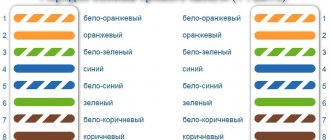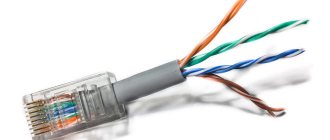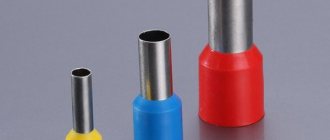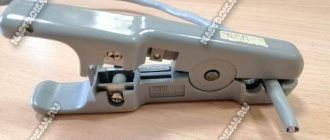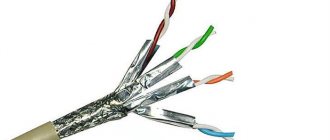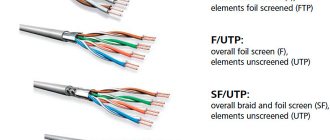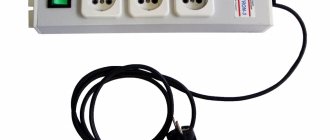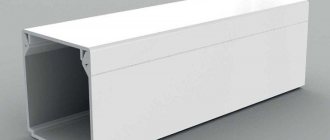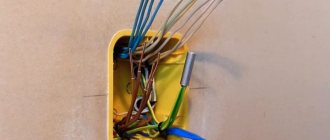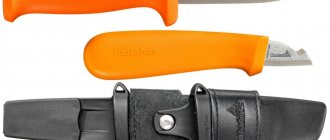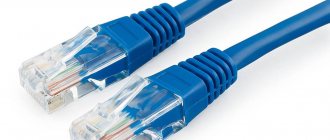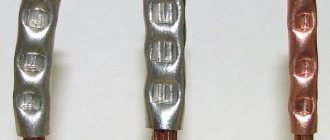Instructions
Various wires are used for wiring telephone communications indoors. The most widespread, especially in old houses, is the telephone distribution wire (TDW), or “noodle”. The low reliability and noise immunity of this wire are compensated by its low price, which explains its widespread use. A more modern and convenient option is a flat line telephone cord (SHTL). Each of the four conductors is individually insulated with multi-colored plastic, which makes wiring easier. All the wires are sealed in a plastic sheath, which prevents mechanical damage. When purchasing a new wire, preference should be given to SHTPL or its analogues.
Read also: Who is a product manager? / Sudo Null IT News
Regardless of the number of conductors in the cord, only two are used for regular telephony. The rest can be used to connect telephones according to the “director-secretary” scheme or in digital mini-PBXs. If there are more than two wires and you don't know which are connected to the PBX, use a multimeter. You can also use the traditional method of checking the signal “by tongue”, but this is unsafe. At the time of the call, the voltage on the telephone line can reach 150 volts, which is enough to cause serious injury. If connectors are on both ends of the wire, use color-coded conductors. All telephones, unless otherwise indicated in the operating instructions, use two central conductors as workers. The remaining contacts in the connector remain unused.
In order to crimp a telephone wire, you must first cut it straight, and then remove the outer plastic insulation at a distance of one and a half centimeters from the edge. As a result, you should have in your hands the end of the wire with multi-colored conductors sticking out. Do not remove the plastic insulation from individual conductors. Identify the two wires that are connected to the telephone exchange. Arrange the conductors in one plane so that the connected wires are in the middle. Insert the wires into the connector without disturbing their location. Push the wire into the connector until it stops. Insert the connector into the crimping pliers. Be careful not to let the wires fall out of the connector. Squeeze the handles of the pliers tightly. Remove the crimped telephone wire and check its functionality.
If you need to establish a local connection between computers, use one of the most common communication cables - twisted pair. When you don’t have such a cable at hand, but the matter is urgent, and besides, buying it will take up a significant part of your time - try making such a cable at home. This procedure is technically simple. But it will require additional knowledge in this matter.
The procedure for crimping a twisted pair of 4 cores
Crimping a 4-core twisted pair cable begins with preparing the necessary tools and materials.
- First of all, separate a piece of cable of the required length from the coil. It is not necessary to make the cut even, since we will trim the ends of the conductors a little later.
- Step back from the cut 40-50 mm. Use a stripper, crimper blade, or other tool to make a circular cut into the insulation. Try not to damage the inner veins.
Stripped UTP cable
We bite off the ends of the twisted pair wires
We put the connector on the contacts
Crimping RJ45 using pliers
Checking the reliability of crimping
Conclusion
Today you have mastered the rules for crimping a twisted pair cable consisting of four conductors. We hope we have sorted out the eight-core cable too.
Congratulations, you already know a lot and can consider yourself almost a professional network installer. But don’t rush to leave our site – we still have a large supply of useful and interesting information for you.
Source: o-vitoipare.ru
Tools and crimping technology
First, consumables are selected. It is recommended to use standard KSPV wire. For analog phones, KSPV 2x0.4 (2 cores) is used. Digital connections are made using KSPV 4x0.4 (4 contacts). In a similar SHTLp, the cores are multi-wire, which complicates the installation process. As a socket, the choice is the standard model R-11/12.
In a two-core wire, the signal and power are connected to the middle contacts. The four-wire cable is connected via a direct layout. The cross-over circuit, where the wires in pairs are swapped, is used abroad.
For a reliable connection, you need to do the following:
Self-installation or professional services
Carrying out such work will not cause difficulties for people with experience. However, simple non-compliance with safety rules and low-quality consumables can lead to dire consequences. And if at home re-installation and the time spent on it are not critical, then to ensure communication in the office or in production, errors will directly affect the work process.
Why you should use the services of specialists:
- minimizing the time required to establish one connection;
- guaranteed quality;
- good appearance;
- There will be no additional consumption of materials and components for rework.
Professionals will help you choose the optimal consumables and components based on the terms of the technical specifications. This will have a positive impact on the budget.
Our specialists will help you create the optimal list of materials. To get advice and order consumables, just call: +375 (162) 44-66-60
or
+375 (29) 202-13-86
.
Source: viva-el.by
A little theory
The name of the RJ-45 connector, which is familiar to many, is actually erroneous, since the connector itself is called 8P8C (8 positions, 8 pins) and is actually universal, and “RJ-45” is the name of the standard for both parts of the connector (plug and socket) and their connection diagrams. The most important thing about this is that not all contacts can be used when connecting, and the order of individual wires may change depending on the purpose of the resulting cable.
The cable itself is also called twisted pair. It comes in two types, depending on the number of cores - individual wires located inside the overall insulation:
- 4 cores - cheaper, designed for a throughput of no more than 100 Mbit/s. Due to its low cost, it is used by most Internet providers.
- 8 cores - expensive, provides connection speeds of up to 1000 Mbit/s and is usually used for installing high-speed networks.
Twisted pair initially does not have connectors (unless, of course, we are talking about a ready-made patch cord), and their installation (crimping) may be required in different cases:
- when independently producing a patch cord of the required length,
- when replacing an old connector that has become unusable, for example, due to damage to one of the wires on the Internet cable entering the apartment.
Considering all of the above, it is worth considering how to crimp a connector for the Internet of both types - with 4 and 8 cores. Accordingly, for work you will need a piece of twisted pair cable of suitable length and several new RJ-45s.
What do we need?
Select a cable and lay it
Measure from point A to B how much cable you need. Immediately figure out how it will go in the cable channel or be attached to the walls. Perhaps you are going to hide it under the baseboard. Before laying it is advisable to ring the cable :).
Before the “crimping” operation, the cable must already be laid, leaving an adequate margin at the ends. For example, it would be desirable that a computer with a connected cable could be pulled out of a niche, unfolded, and perform some kind of maintenance on the system unit without having to disconnect the wires.
Cables for laying the network are used with 2 and 4 twisted pairs of wires. Any of them will suit you, but 4-wire (with only 2 pairs) will allow you to connect only at speeds of up to 100 Mbit. Such a cable is cheaper, easier to crimp, and often higher speed is not required.
Please note that each pair of cores is marked with its own color. For example, an orange wire is intertwined with a white-orange one. Each pair is absolutely no different from the other, except for the color of the insulation. Wire connection and crimping diagrams always specify the colors of the wires, but in fact, if you swap two pairs, everything will work exactly the same.
RJ-45 connectors
Through the transparent body of the connector, 8 gold-plated contacts are visible. The numbering of contacts from 1 to 8 is shown in the picture.
For crimping we only need a pair of these connectors. But it never hurts to take a few in reserve.
